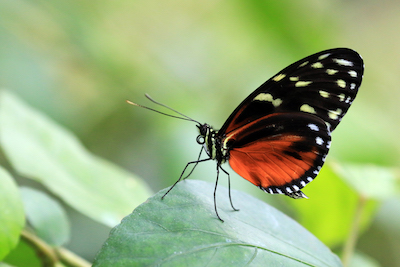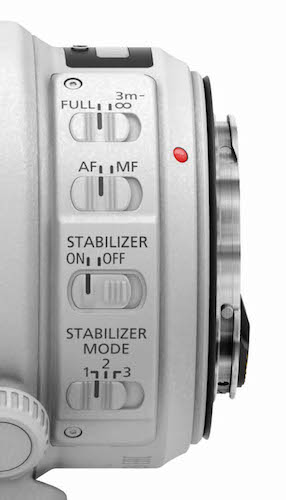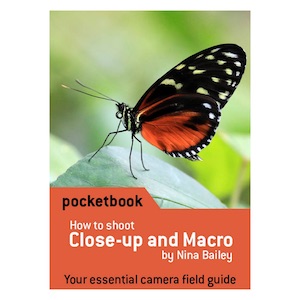
But actually, for your photography, it's a brilliant place to go. Subjects galore, colour aplenty, and you can capture some really simple compositions with the right equipment.
This particular shot was taken, not with a macro lens, but a telephoto one. They're ideal for this sort of photography as you don't need to get too close to your subject (which the butterflies are happy about).
The lens used for this shot – the EF 70-300mm f4-5.6L IS USM – has a closest focusing distance of 1.2 metres, far enough away for the reasonably compliant yet skittish butterflies at Stratford.
Get hands on tuition
Want to learn alongside one of our experienced Canon-trained tutors? Find out more about the Close-up and macro practical course at Stratford upon Avon.
How was it shot?
Shot on Canon EOS 70D with EF 70-300mm f4-5.6L IS USM lens at 300mm, 1/250 second at f8, ISO 2500.
By keeping the ISO high, we've been able to keep the shutter speed (combined with benefits of image stabilisation – see below) fast enough to handhold this shot. No tripod was used to capture this shot.
How to use your telephoto lens for close-ups
Set your zoom lens to its longest focal length, and you'll be able to achieve pretty reasonable magnification – somewhere between 1:3 and 1:5 typically – without the need for anything else, like extension tubes. For a subject the size of a butterfly, this will be enough to fill the frame.
Handholding rule and image stabilisation
The normal rule for handholding can be split into two parts.
Firstly, no shutter speed slower than 1/30 second can be guaranteed to give a sharp image when handholding, regardless of the focal length you're using, or use of image stabilisation (or how steady your hand is).
Secondly, the shutter speed needs to be at least 1/focal length of the lens being used. So, for a 50mm lens, 1/60 second is the slowest usable speed; for a 400mm lens the minimum is 1/500 second.
This image was shot at 1/250 second, at 300mm. We've been able to achieve this because the lens has image stabilisation (IS). Gyro motors in the lens sense movement from camera shake and react to compensate for that movement. This, in turn, means that we can shoot (depending on the lens) up to three, sometimes four, stops faster than would otherwise be possible. So decreasing the shutter speed by one stop – from 1/500 second (minimum for 300mm focal length) to 1/250 second is easily manageable.
|
Check this out – the ultimate pocket-sized guide to capturing Close-up and Macro. With this 48-page guide in your pocket or camera bag, you'll have all the essential tips to master this technique out in the field with your Canon EOS camera. Included in the Pocketbook are magnification and EV tables, Custom mode recipes, plus all the key settings and considerations you need to capture stunning close-up and macro images of small subjects. Buy Close-up and Macro Pocketbook for £7.95 from EOS magazine shop |
 |